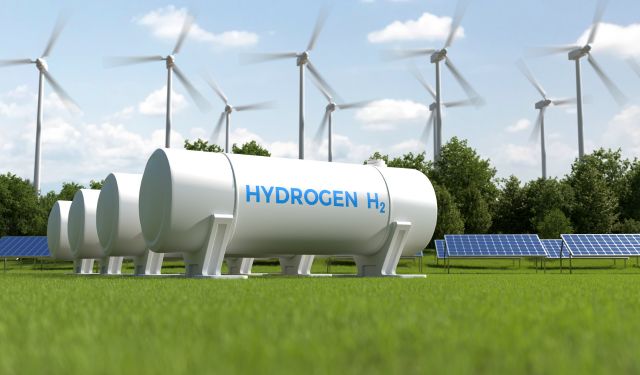Leverage Project Finance and PPAs: Secure non-recourse debt and long-term revenue contracts like Power Purchase Agreements (PPAs) to attract investors and lenders for large-scale energy storage projects.
Combine Debt, Equity, and Incentives: Optimize your capital structure by blending debt financing, equity investment, and government incentives such as tax credits and grants.
Align with Industry Trends: Focus on emerging technologies, grid-scale applications, and sustainability to make your project attractive to financiers and stakeholders.
As the demand for renewable energy grows, large-scale energy storage projects have become critical for grid stability, renewable integration, and energy independence.
However, financing these projects—especially those requiring $100 million or more—can be complex.
This guide explores the key strategies and options for securing energy storage financing, helping project owners and sponsors navigate the financial landscape effectively.
Why Energy Storage Financing Matters
Energy storage projects are capital-intensive, requiring significant upfront investment in technology, infrastructure, and grid integration.
For energy storage companies and developers, securing the right financing is essential to bring these projects to life.
Whether you’re developing battery storage, pumped hydro, or other innovative solutions, understanding the nuances of project finance and renewable energy finance is crucial to attract investors and lenders.
Key Financing Options for Large-Scale Energy Storage Projects
Project Finance
Project finance is a common approach for large-scale energy storage projects. It involves structuring the financing around the project’s cash flows, with lenders relying on the project’s revenue (e.g., from Power Purchase Agreements or PPAs) rather than the sponsor’s balance sheet. Key features include:
- Non-recourse or limited-recourse debt: Lenders have claims only on the project’s assets and revenue.
- Long-term contracts: PPAs with utilities or corporations provide revenue certainty.
- Risk mitigation: Clear revenue streams and guarantees reduce lender risk.
Debt Financing
Debt financing is a cornerstone of energy storage financing. Options include:
- Commercial bank loans: Traditional lenders offer structured loans for large projects.
- Green bonds: Issued to raise capital for sustainable projects, including energy storage.
- Multilateral development banks: Institutions like the World Bank or Asian Development Bank provide loans and guarantees for projects in emerging markets.
Equity Investment
Equity partners, such as private equity firms, infrastructure funds, or institutional investors, can provide capital in exchange for ownership stakes.
These investors often seek long-term returns and are attracted to projects with strong revenue potential.
Government Incentives and Tax Credits
Many governments offer incentives to support energy storage projects, including:
- Tax credits: For example, the U.S. Investment Tax Credit (ITC) reduces upfront costs for eligible projects.
- Grants and subsidies: Direct funding to lower capital expenditures.
- Regulatory support: Policies mandating energy storage adoption or renewable integration.
Power Purchase Agreements (PPAs)
PPAs are critical for securing energy storage financing.
These long-term contracts with utilities or corporations guarantee a buyer for the stored energy, providing revenue certainty and making the project more attractive to lenders and investors.

Steps to Secure Financing for Your Energy Storage Project
- Develop a Strong Business Case
- Highlight the project’s revenue potential, risk mitigation strategies, and alignment with renewable energy goals.
- Include detailed feasibility studies and financial projections.
- Identify the Right Financing Mix
- Combine debt, equity, and incentives to optimize capital structure and reduce costs.
- Engage with Investors and Lenders
- Target institutions experienced in energy finance and renewable energy projects.
- Present a clear value proposition and risk management plan.
- Leverage Government Programs
- Research and apply for tax credits, grants, and other incentives available in your region.
- Secure Long-Term Revenue Streams
- Negotiate PPAs or other contracts to ensure stable cash flows.

Challenges in Energy Storage Financing
While the opportunities are vast, securing energy storage financing comes with challenges:
- High upfront costs: Large-scale projects require significant capital.
- Revenue uncertainty: Without long-term contracts, lenders may perceive higher risk.
- Regulatory hurdles: Policies and incentives vary by region, impacting project viability.
To overcome these challenges, project owners and sponsors must demonstrate strong project economics, risk mitigation strategies, and alignment with market trends.
Key Areas in the Energy Storage Industry
Understanding the broader context of the energy storage industry can help project owners and sponsors identify opportunities and align their projects with market trends. Here are 10 key topics/areas within the industry:
Battery Technologies
- Lithium-ion, solid-state, flow batteries, sodium-ion, and other emerging chemistries.
- Advancements in energy density, safety, lifespan, and cost reduction.
Grid-Scale Energy Storage
- Large-scale storage systems for utilities and grid operators.1
- Applications like peak shaving, load balancing, and frequency regulation.2
Renewable Energy Integration
- Storing excess energy from solar, wind, and other renewables for later use.
- Addressing intermittency and ensuring a stable energy supply.
Electric Vehicles (EVs) and Mobility
- EV batteries, charging infrastructure, and vehicle-to-grid (V2G) technologies.
- Second-life applications for used EV batteries.
Thermal Energy Storage
- Storing energy in the form of heat or cold (e.g., molten salt, phase-change materials).
- Applications in industrial processes, heating, and cooling.
Hydrogen and Fuel Cells
- Hydrogen production, storage, and utilization as an energy carrier.
- Fuel cells for stationary and mobile energy storage.
Pumped Hydro and Mechanical Storage
- Traditional and advanced pumped hydro storage systems.
- Other mechanical storage methods like compressed air energy storage (CAES) and flywheels.
Energy Management Systems (EMS) and Software
- Smart software for optimizing energy storage deployment and operation.
- Integration with IoT, AI, and machine learning for predictive analytics.
Policy, Regulation, and Market Dynamics
- Government incentives, subsidies, and regulations promoting energy storage.3
- Market trends, investment opportunities, and business models.
Sustainability and Recycling
- Sustainable sourcing of raw materials (e.g., lithium, cobalt).
- Battery recycling and circular economy initiatives to reduce environmental impact.

Types of Energy Storage Technologies
Energy storage projects can utilize various technologies, each with unique advantages and applications:
- Battery Storage: Lithium-ion, flow batteries, and emerging chemistries.
- Pumped Hydro: Storing energy by moving water between reservoirs.
- Thermal Storage: Storing energy as heat or cold for later use.
- Mechanical Storage: Flywheels and compressed air energy storage (CAES).
- Hydrogen Storage: Using hydrogen as a long-term energy carrier.
Understanding these technologies can help project owners choose the right solution for their specific needs and attract the appropriate financing.

Conclusion: Unlocking the Potential of Energy Storage Projects
Financing large-scale energy storage projects is a complex but achievable goal. By leveraging project finance, debt and equity options, government incentives, and long-term revenue contracts, energy storage companies can secure the funding needed to bring their projects to life.
For project owners and sponsors seeking $100 million or more in financing, the key lies in presenting a compelling business case, engaging the right partners, and navigating the financial landscape strategically. With the right approach, your energy storage project can become a cornerstone of the clean energy transition.
REFERENCES:
- International Energy Agency, Grid-scale Storage, retrieved from https://www.iea.org/energy-system/electricity/grid-scale-storage
- University of Michigan, Center for Sustainable Systems, U.S. Grid Energy Storage Factsheet, retrieved from https://css.umich.edu/publications/factsheets/energy/us-grid-energy-storage-factsheet
- U.S. Department of Energy, Energy storage, retrieved from https://www.energy.gov/oe/energy-storage

